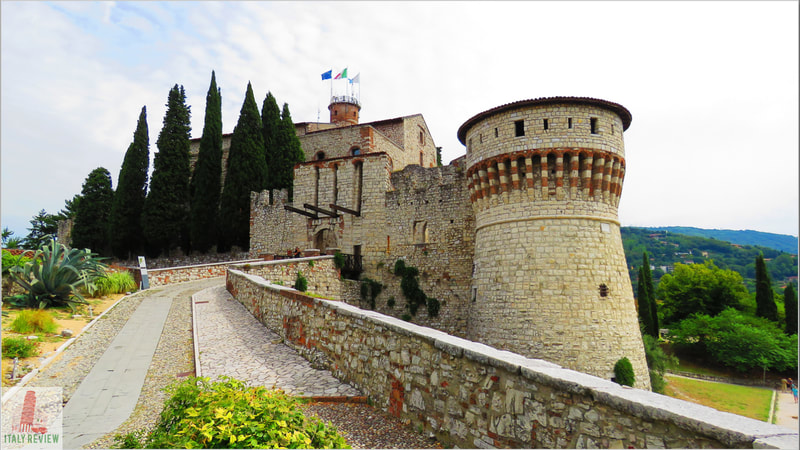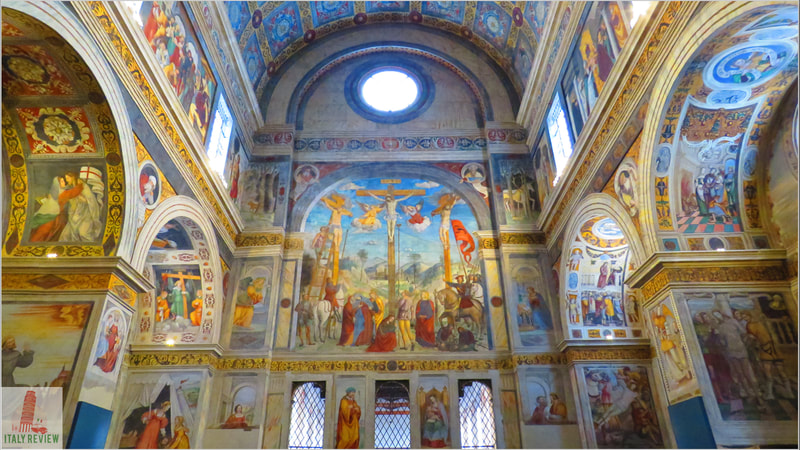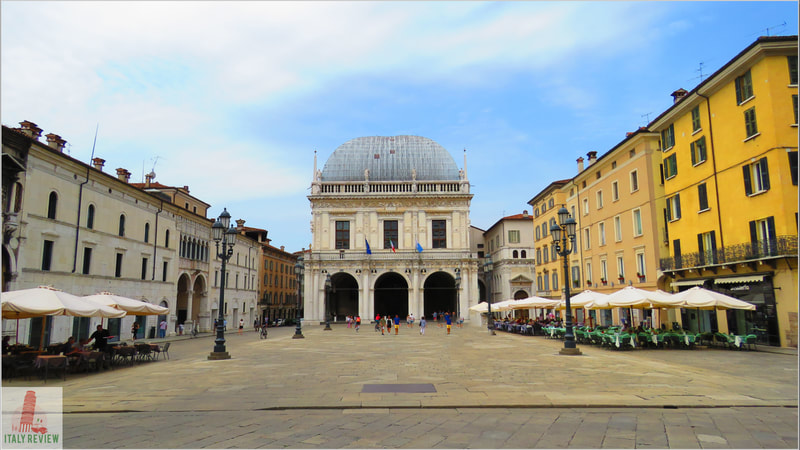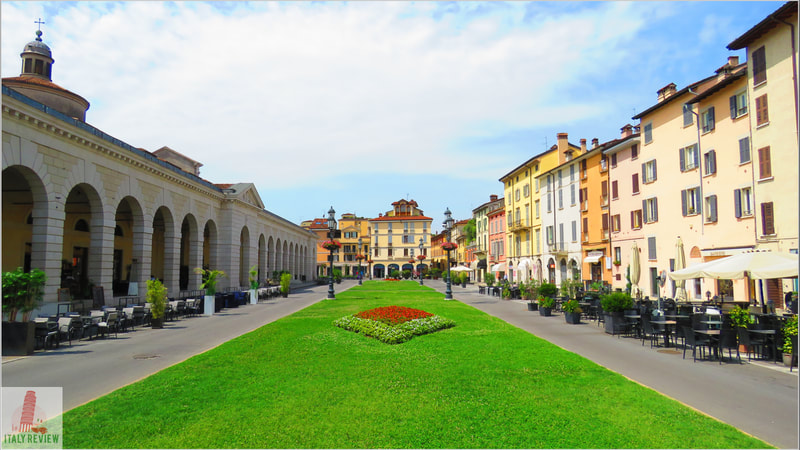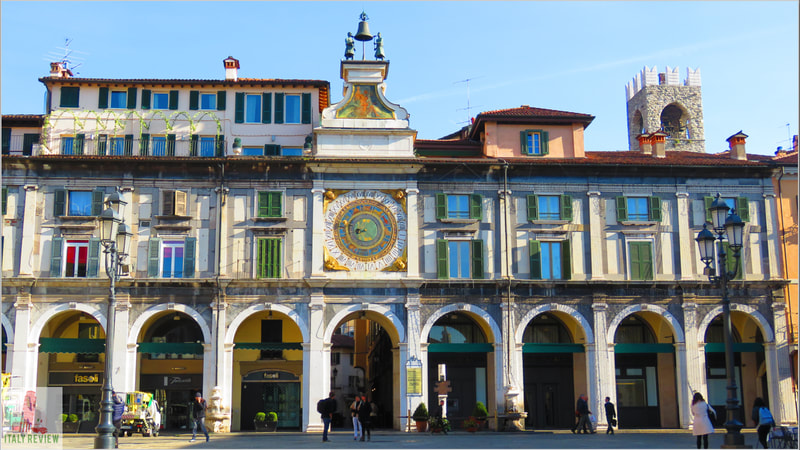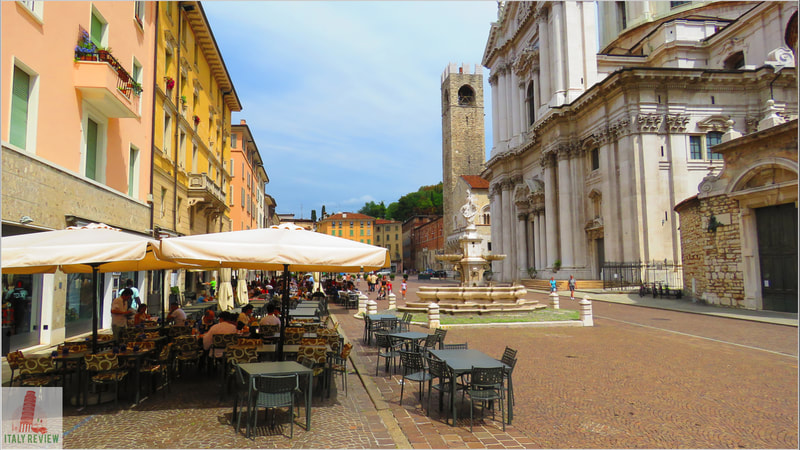Brescia
|
By Dion Protani
|
Latest update: 30 December 2023
|
|
With a population approaching 200,000, the city of Brescia is the second largest in Lombardy and the capital of its own province.
One of Italy's most important industrial centres: apart from metallurgic companies it's home to major firearms brands such as Beretta, it also sits in an advantageous area for visitors to the Italian lakes, nestled as it is between Lake Garda and Lake Iseo. Tourists are also drawn by the annual "Mille Miglia" (Thousand Miles) which was originally an endurance race from Brescia to Rome and back, now evolved into a procession of vintage cars. |
Related links
Brescia: Gastronomy and History
The European Centre of Gastronomy in 2017, Brescia brings to the table Italy's most famous caviar as well as the Franciacorta sparkling wine. Dating back to 1,200 BC, Brescia can boast more than 3,000 years of history, much of it glorious including its period under Roman rule when it was known as Brixia; its position at the foot of the Alps making it strategically important both for trade and military purposes.
During medieval times Brescia was a capital of the Longobard Kingdom (also known as the "Lombard Kingdom") from where the modern region of Lombardy takes its name), before its capture by Charlemagne in 774 AD. The Longobard heritage is a fundamental part of modern-day Brescia; since 2011 it has been inscribed into the list of UNESCO World Heritage Sites with the monastic complex of San Salvatore and Santa Giulia forming part of the wider Longobards in Italy: Places of Power (568–774 A.D.) inscription.
The European Centre of Gastronomy in 2017, Brescia brings to the table Italy's most famous caviar as well as the Franciacorta sparkling wine. Dating back to 1,200 BC, Brescia can boast more than 3,000 years of history, much of it glorious including its period under Roman rule when it was known as Brixia; its position at the foot of the Alps making it strategically important both for trade and military purposes.
During medieval times Brescia was a capital of the Longobard Kingdom (also known as the "Lombard Kingdom") from where the modern region of Lombardy takes its name), before its capture by Charlemagne in 774 AD. The Longobard heritage is a fundamental part of modern-day Brescia; since 2011 it has been inscribed into the list of UNESCO World Heritage Sites with the monastic complex of San Salvatore and Santa Giulia forming part of the wider Longobards in Italy: Places of Power (568–774 A.D.) inscription.
Sightseeing Brescia
The Santa Giulia complex and museum is around a 10 minute walk from Brescia's pretty medieval centre. One of the main sights here is the Piazza della Loggia with its beautiful clock tower (Torre dell'Orologio) at one end and the town hall, simply known as "La Loggia" at the other.
The Piazza Paolo VI is home to Brescia's two cathedrals: Duomo Nuovo (New Cathedral) and Duomo Vecchio (Old Cathedral), while a short walk from there will take you to the Piazza della Vittoria, notable for its completely different architectural style, belonging to the Italian Fascist period of the 20th century and built in 1932. Slightly further away from the centre you'll find the looming presence of the Castello di Brescia, which has been standing guard to the city since the 15th century.
The Santa Giulia complex and museum is around a 10 minute walk from Brescia's pretty medieval centre. One of the main sights here is the Piazza della Loggia with its beautiful clock tower (Torre dell'Orologio) at one end and the town hall, simply known as "La Loggia" at the other.
The Piazza Paolo VI is home to Brescia's two cathedrals: Duomo Nuovo (New Cathedral) and Duomo Vecchio (Old Cathedral), while a short walk from there will take you to the Piazza della Vittoria, notable for its completely different architectural style, belonging to the Italian Fascist period of the 20th century and built in 1932. Slightly further away from the centre you'll find the looming presence of the Castello di Brescia, which has been standing guard to the city since the 15th century.
Comune di Brescia
|
Province: Brescia
Region: Lombardy Population: 195,906 (source: ISTAT 1 January 2023) Total size: 90 km² Elevation: 149 metres Top sights: Museo di Santa Giulia, Brescia Castle Close by: Lake Garda, Lake Iseo, Salò, Desenzano del Garda Recommended accommodation: Centro Paolo VI |
UNESCO World Heritage Site
Longobards in Italy: Places of the Power (568-774 A.D.)
Site: The monumental area with the monastic complex of San Salvatore-Santa Giulia
Year: 2011
Longobards in Italy: Places of the Power (568-774 A.D.)
Site: The monumental area with the monastic complex of San Salvatore-Santa Giulia
Year: 2011
Brescia Travel
Brescia is one of the major cities connected by the A4 motorway which stretches west to east from Turin towards Venice. An hour and a half to the west there's Milan while in the other direction the cities of Verona (1 hour) and Padova (around 2 hours) are also within range of a day-trip.
Although Brescia has its own airport just outside the city, it's mainly for domestic flights and there are more international options available via Milan Bergamo Airport (51 km) or Verona Airport (62 km). By train, Brescia is within easy reach of locations around Lake Garda such as Desenzano del Garda or Sirmione, as well as Milan and Italy's other major cities.
Getting around the city centre is easiest on foot as the most attractive areas such as Piazza della Loggia are pedestrianised but there's also a Metro train system in operation. This particularly works well for the train station which would otherwise be a 15 minute walk.
Although Brescia has its own airport just outside the city, it's mainly for domestic flights and there are more international options available via Milan Bergamo Airport (51 km) or Verona Airport (62 km). By train, Brescia is within easy reach of locations around Lake Garda such as Desenzano del Garda or Sirmione, as well as Milan and Italy's other major cities.
Getting around the city centre is easiest on foot as the most attractive areas such as Piazza della Loggia are pedestrianised but there's also a Metro train system in operation. This particularly works well for the train station which would otherwise be a 15 minute walk.
|
Public transport: Buses, metro, mainline train station
By car: Lake Garda - 30 mins (33 km), Milan - 1 hour 21' (106 km) |
Fly to: Milan Bergamo Airport - 36 minutes by car (51 km)
Main train station: Stazione di Brescia (1km/15min walk to centre) |
Brescia Gallery
Brescia Overview
Profile
Nestled in the Lombardy region of northern Italy, Brescia is a captivating city that seamlessly blends its rich historical heritage with a modern, vibrant atmosphere. Known for its archaeological treasures, historic architecture, and picturesque lakeside setting, Brescia offers travelers a rewarding destination steeped in culture and beauty.
History
Brescia's roots trace back to Roman times when it was known as Brixia. Its history is a tapestry of Roman, medieval, and Renaissance influences. The city has witnessed significant events, from battles during the Italian Wars to the industrialization that shaped modern Brescia.
Highlights
- Historic Centre: Brescia's well-preserved historic center is a testament to its storied past. Wander through narrow medieval streets, visit charming squares, and admire architectural wonders like the Brescia Cathedral and the Broletto, a medieval palace.
- Archaeological Sites: Brescia is known for its Roman heritage. Explore the Capitolium, an ancient Roman temple, and the Teatro Romano, an ancient amphitheater. The Santa Giulia Museum, a UNESCO World Heritage site, showcases Brescia's history through its extensive collection.
- Lakes and Nature: Brescia is surrounded by picturesque lakes, including Lake Garda and Lake Iseo, both easily accessible for day trips. These lakes offer opportunities for water sports, hiking, and leisurely boat rides.
- Cuisine: Savor Lombard cuisine at local trattorias and restaurants. Brescia is famous for its hearty dishes like "casoncelli" (stuffed pasta) and "polenta," often paired with regional wines like Franciacorta.
- Events: Brescia hosts various cultural events, including the Mille Miglia, a famous vintage car race, and the Festival of the Muses, a celebration of music, arts, and culture.
Visitor information
- Location: Brescia is located in the Lombardy region of northern Italy, approximately 100 kilometers (62 miles) east of Milan.
- Access: The nearest major airport is Milan-Malpensa Airport (MXP). From Milan, you can reach Brescia by train or bus. The journey takes around 1.5 to 2 hours. Brescia also has its own airport, Brescia Montichiari Airport (VBS), with domestic and limited international flights.
- Accommodation: Brescia offers a variety of accommodation options, including hotels, bed and breakfasts, and boutique guesthouses. Staying in the historic center is a great way to immerse yourself in the city's charm.
- Best Time to Visit: The best time to visit Brescia is during the spring and autumn when the weather is pleasant for outdoor exploration. Summers can be warm, while winters are cool, so plan your visit based on your preferences.
- Local Tips: Don't miss the opportunity to try the local sparkling wine, Franciacorta, which is produced in the nearby Franciacorta region and often compared to Champagne.

